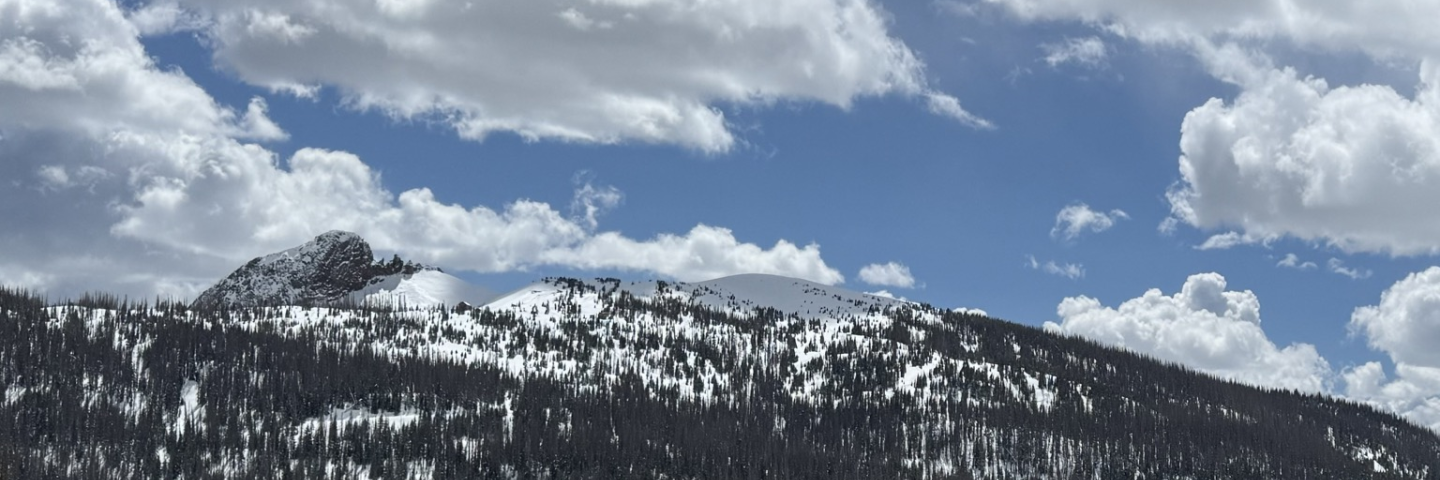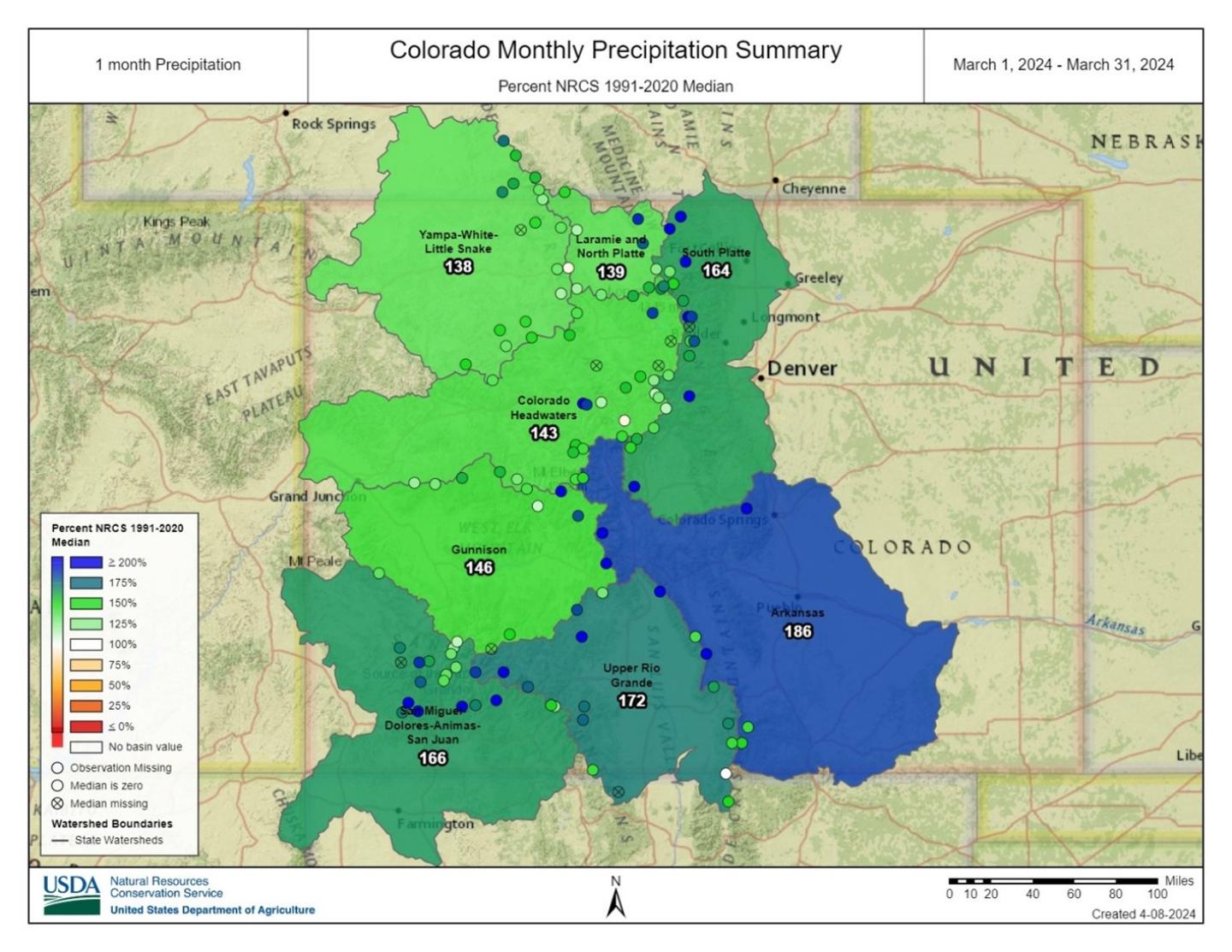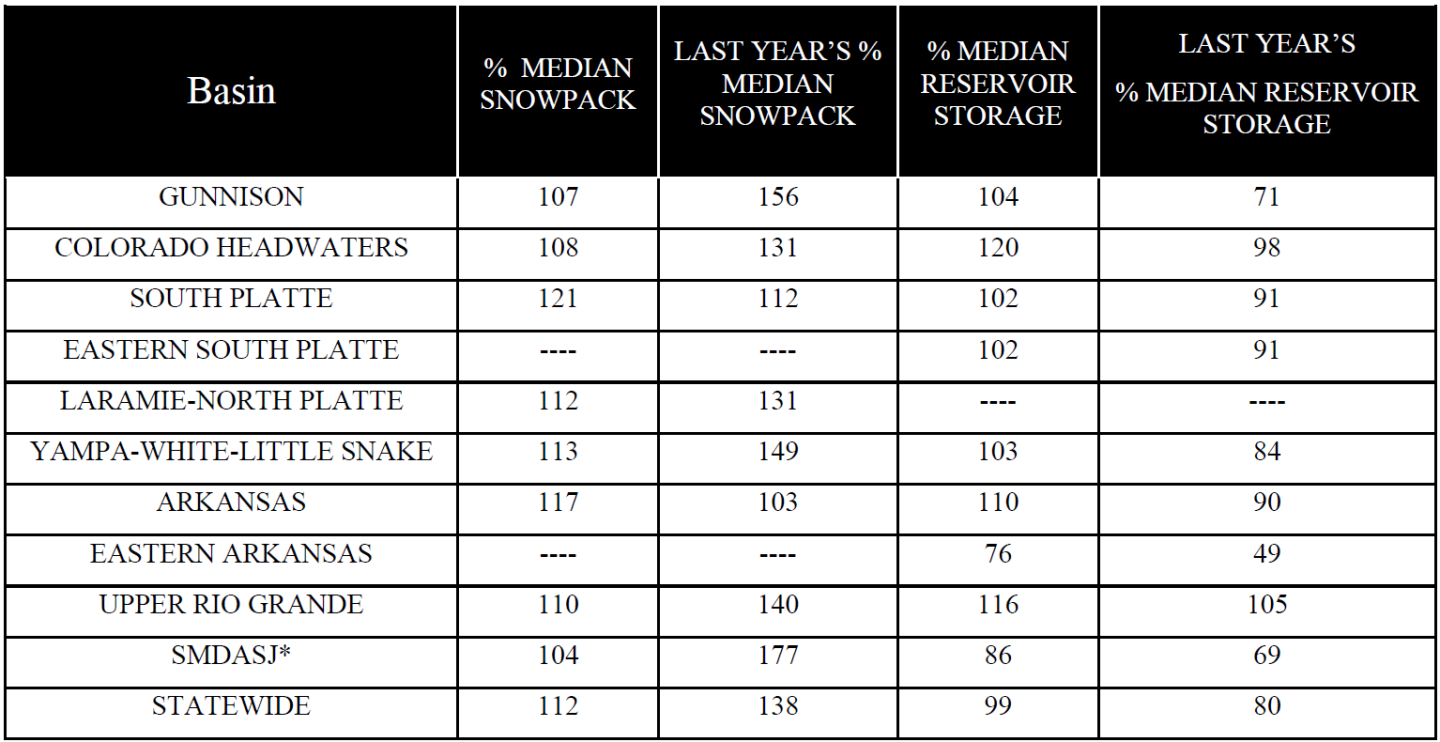Late-Season Snowstorms Bolster Colorado’s Streamflow Forecasts for Spring 2024

Current snowpack stands at 114 percent of median. As Colorado welcomes the spring season, a review of March storms reveals that late-season snowstorms and consistent precipitation have led to a significant boost in snowpack and precipitation numbers across most major river basins.
Denver, CO – April 8th, 2024 – Current snowpack stands at 114 percent of median. As Colorado welcomes the spring season, a review of March storms reveals that late-season snowstorms and consistent precipitation have led to a significant boost in snowpack and precipitation numbers across most major river basins. The state experienced a marked increase in snow water equivalent (SWE) in March, ending the month at 112 percent of median snowpack. Statewide, precipitation for March was 155 percent of median and water year-to-date precipitation stands at 103 percent of median. These conditions have improved streamflow volume forecasts statewide, currently standing at 103 percent of median.

From March 13-15, an impactful upslope storm shrouded the Front Range with SNOTELS reporting one to nearly four feet of new snow in the South Platte basin. Snowpack in the South Platte improved from 93 percent at the start of March to 115 percent by mid-March and ended the month at 121 percent. “This mid-March storm propelled many sites within this basin into the upper decile. Not only did Niwot SNOTEL receive five inches of SWE and a 41-inch increase in snow depth, ranking it third highest in its 44-year record, but this storm also mirrored these exceptional increases at numerous SNOTEL sites,” comments Nagam Gill, NRCS hydrologist. The Upper Rio Grande basin shows similar improvements and boosted snowpack at the start of the month from 84 to 96 percent mid-month.
As Colorado surpasses the historical peak SWE date, typically in early April, our focus shifts from accumulating snowpack to the streamflow forecasts. The April 1 forecasts show improvement with most basins above median. Notably, 43 out of 87 streamflow monitoring stations have forecasted streamflow volumes above median. In the combined Yampa-White-Little Snake River basin streamflow volumes are forecasted at 120 percent and have all nine streamflow monitoring stations anticipating above median flows. Despite these positive developments, certain basins have not fully rebounded from the earlier deficits in the water year. “Statewide precipitation from October to December 2023 was at 80 percent, ranging from 59 to 87 percent across basins,” says Gill. “This below-median precipitation early in the water year could mean drier soils which would need to absorb more snowmelt, potentially affecting streamflow efficiency.” The combined San Miguel-Dolores-Animas-San Juan River basin, while receiving above median March precipitation at 145 percent, stands at 82 percent of median streamflow forecasts, reflecting a water year-to-date precipitation of 92 percent of median. The South Platte River basin benefitted from upslope storms, enhancing precipitation medians, and echoing this uptick in the streamflow volumes, with all 12 stations reporting near or above median 50% exceedance forecasts. Streamflow forecasts in the Upper Rio Grande and the Arkansas River basins are anticipating 96 and 107 percent, respectively. The Colorado Headwaters and Gunnison River basins are both forecasted above median streamflow at 105 and 104 percent, respectively.
Although we await more detailed reservoir data, preliminary figures at the end of March indicate that storage levels have generally kept pace with historical medians ranging from 86 to 116 percent of median. The Yampa-White-Little Snake and South Platte River basins are maintaining near normal reservoir storage at 103 and 99 percent of median, respectively. The combined San Miguel-Dolores-Animas-San Juan River basin is at 86 percent with Navajo Reservoir at 82 percent of historical capacity.
Colorado’s Snowpack and Reservoir Storage as of April 1st, 2024

* San Miguel-Dolores-Animas-San Juan River basin
* *For more detailed information about February mountain snowpack refer to the April 1st, 2024 Colorado Water Supply Outlook Report. For the most up to date information about Colorado snowpack and water supply related information, refer to the Colorado Snow Survey website.

